Choosing Turf for Community Spaces
Unlike standard domestic turfing, selecting and installing turf for a public space requires careful planning and consideration.
The turf must be able to withstand constant use, variable weather conditions, and be suitable for its designed purpose which makes the process more complex than if you were just turfing your back garden!
Online Turf’s decades experience in providing high-quality turf across the UK means that we’ve seen it all - from small scale domestic projects, to larger scale community gardens, so you can trust that we know exactly how to advise you on getting the right turf for your community space.
The Unique Demands of Community Turf
When selecting a turf for your community space, there’s a number of deciding factors. You’ll want to consider the function, intended usage and both material and maintenance budget. By considering the purpose and target audience before you purchase any turf, this will help you choose the right kind of grass for the area.
High Wear and Tear
If you’re looking to run a community facing project that’s going to get a lot of foot traffic, wear and tear needs to be one of your first considerations.
For example, if you’re looking for grass to go in a public garden, a sports area, or an area where events will be held, then it’s likely that the grass is going to see a lot of footfall. Notably, more footfall than a standard lawn would tend to experience, so durability needs to be a priority when selecting turf for a community space.
Varied Usage
One of the benefits of a community space is that it can be used for a variety of events, and by a variety of people. The turf needs to be suitable for a wide range of needs.
If you’re looking to turf a village green or a park, for example, the grass may be used for picnics one day and a game of football the next, so a good, all-rounder turf would be able to handle a range of activities to help serve everyone in your community.
Alternatively, if you’re designing the project with a single, specific use in mind, you then may want to choose a turf that’s best suited to that specific use.
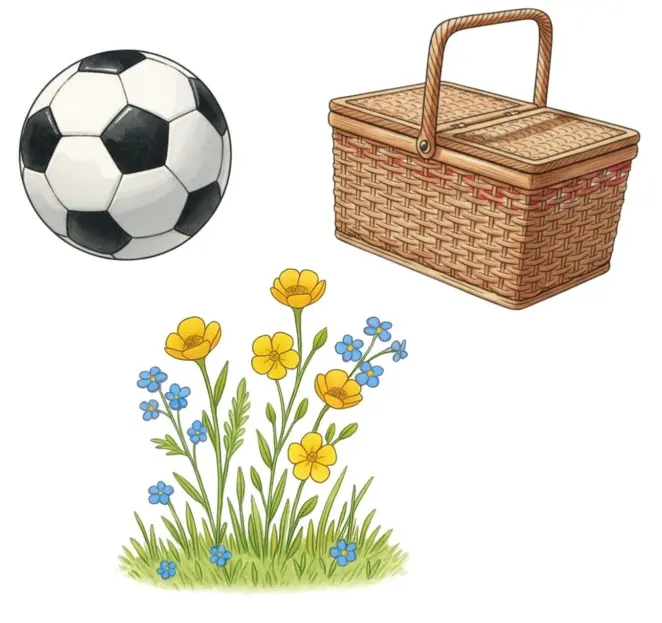
Aesthetics vs. Function
One of the most important considerations for people is how the turf is going to look. When selecting a turf that’s going to serve your community, you understandably want something that’s going to look visually appealing and impressive.
However, while it’s tempting to prioritise appearance, choosing the right turf for a community space is about finding the balance between aesthetics and function. Your turf must not only look amazing but also be durable enough for its intended purpose. For example, if you were looking to turf a sports pitch, choosing an ornamental looking turf that doesn’t have the durability to withstand heavy foot traffic means that you will likely run into maintenance issues later down the line, ruining its aesthetic appeal.
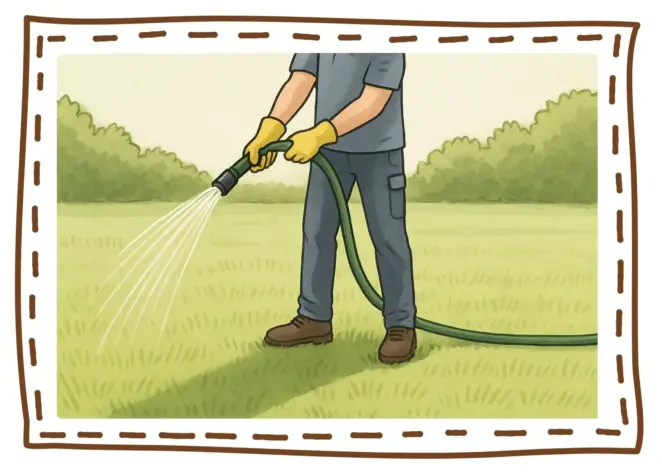
Maintenance Challenges
When considering what’s going to serve your community best, it’s easy to dream big about a perfectly maintained, professional-looking patch of grass.
However, the reality for most community led spaces is that they come with a limited budget, and lawn care often falls to volunteers or councils with limited resources. This means you’ll want a turf that can largely look after itself.
Natural turf has an amazing ability to self-repair, making it a better choice over artificial turf for long term maintenance. However, the key is choosing a durable turf that has an ability to bounce-back, ensuring it holds up well with only basic, routine care like mowing, watering and occasional repairs.
Choosing the Right Turf
Durability and Wear Tolerance
If you’re looking to prioritise durability and wear and tear, you want a strong, durable turf that’s going to suit areas like sports pitches, parks, village greens etc.
All our products have a seed blend of Red Fescue and Rye Grass. The Red Fescue is known for its soft texture and shade tolerance, but the Rye Grass is known for its durability.
Rye Grass is one of the toughest grass types – it can bounce back quickly and needs very little care to do so.
Its fibrous root system helps loosen and aerate the soil, enhancing its structure and allowing your grass to absorb nutrients more efficiently.
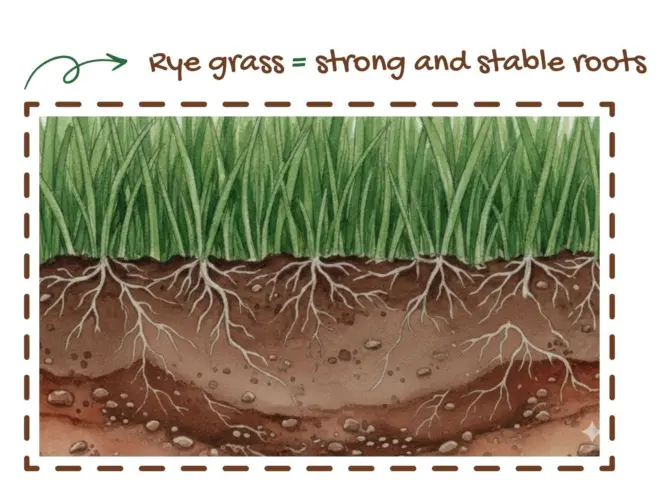
Our Stadium turf is extremely durable, a utility turf that can easily handle increased foot traffic. As the name Stadium suggests, this turf is ideal for playing a variety of sports, so is good for sports pitches or busy areas.
However, our Rye Gold is our premium product- it has a higher percentage of Rye Grass for super strong root systems and fine, ornamental looking blades.
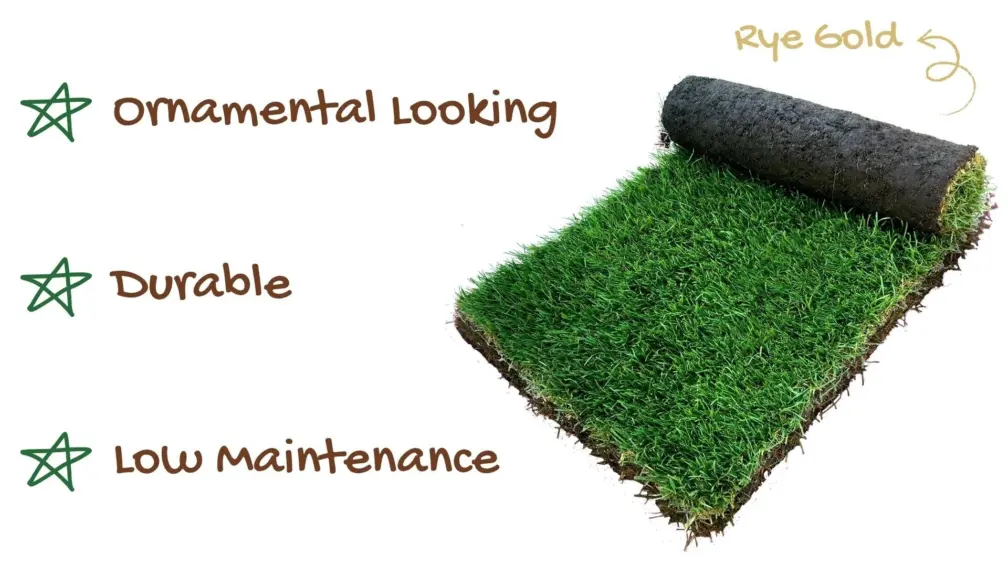
So, if you’re looking for that perfect balance between aesthetics and function, the Rye Gold is the way to go. You can also be reassured in knowing you’re investing in our premium product, so you’re getting the best quality for your community.
If you want to learn more about the benefits Rye Gold can give to your green space, check out out 'Why Rye Gold is Great for your Garden' blog.
“Is it better to use turf or grass seed for a large area?”
For a large area or to help keep costs down, you may be tempted to use grass seed rather than turf. Whilst many people assume seeding is quicker and easier, that’s not always the case, especially if you want quick, high-quality results for a community space.
Grass seed can take a few weeks to germinate and even more time to fully establish.
It also should only be sown when temperatures are optimal, like in Spring or Autumn, where the temperature is consistently reaching over 10 degrees for the best results. Until grass seed is well established it is also more likely to struggle in periods of drought, unlike turf which already has a resilient, established root system.
So, depending on when you’re completing the project, you may want to invest a little more in turf to make sure you’re getting high quality, quick results.
Once laid, turf can be ready to walk on in as little as 2 weeks and it's easy to lay- check out our turf laying guide for our top tips.
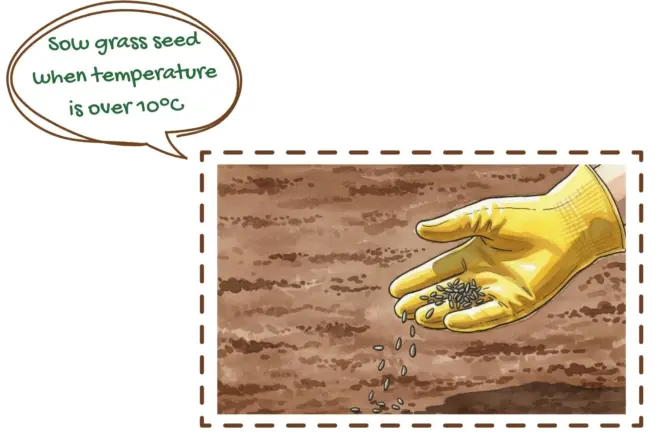
Root System and Establishment
The root system and establishment of your grass are important when considering the long-term success of your community space. Choosing a professionally grown, mature turf will be more reliable and higher quality than standard varieties.
Our specialist blend used in our Rye Gold turf has been perfected over two decades. It's a blend of Perennial Rye Grass and Strong and Slender Creeping Red Fescue, so you’re guaranteed to get a resilient, lush lawn that’s ready to go. Our freshly cut turf is quick and easy to lay - get it laid on the day of delivery, give it 2-3 weeks to root in, and you’ll have a professional-looking lawn that’s ready to handle public use.
Don’t believe us? Hear it from the experts (our customers!):
The Rye Gold turf is lush, green, and of excellent quality. It's been down for two weeks now and is looking fantastic.
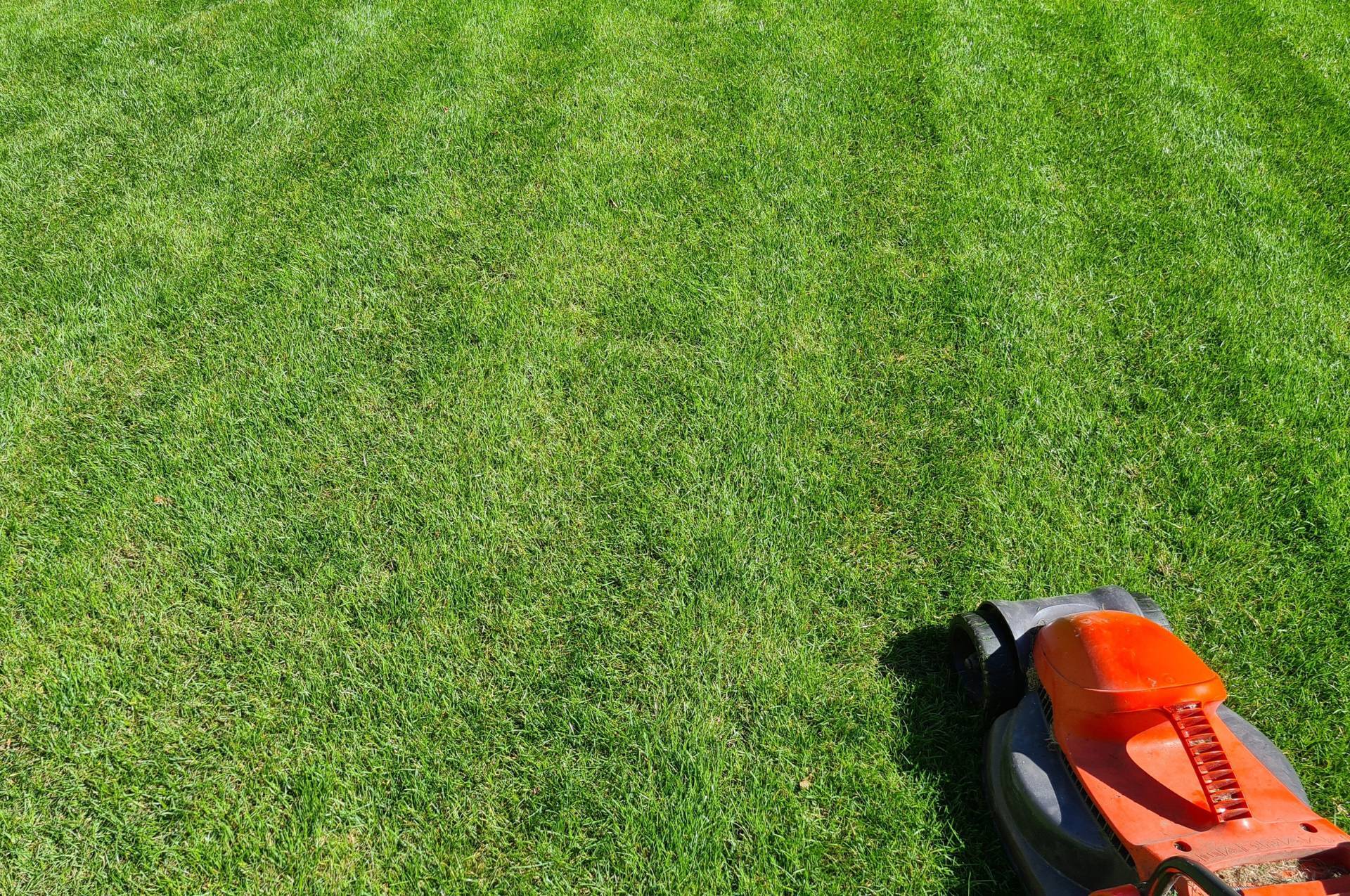
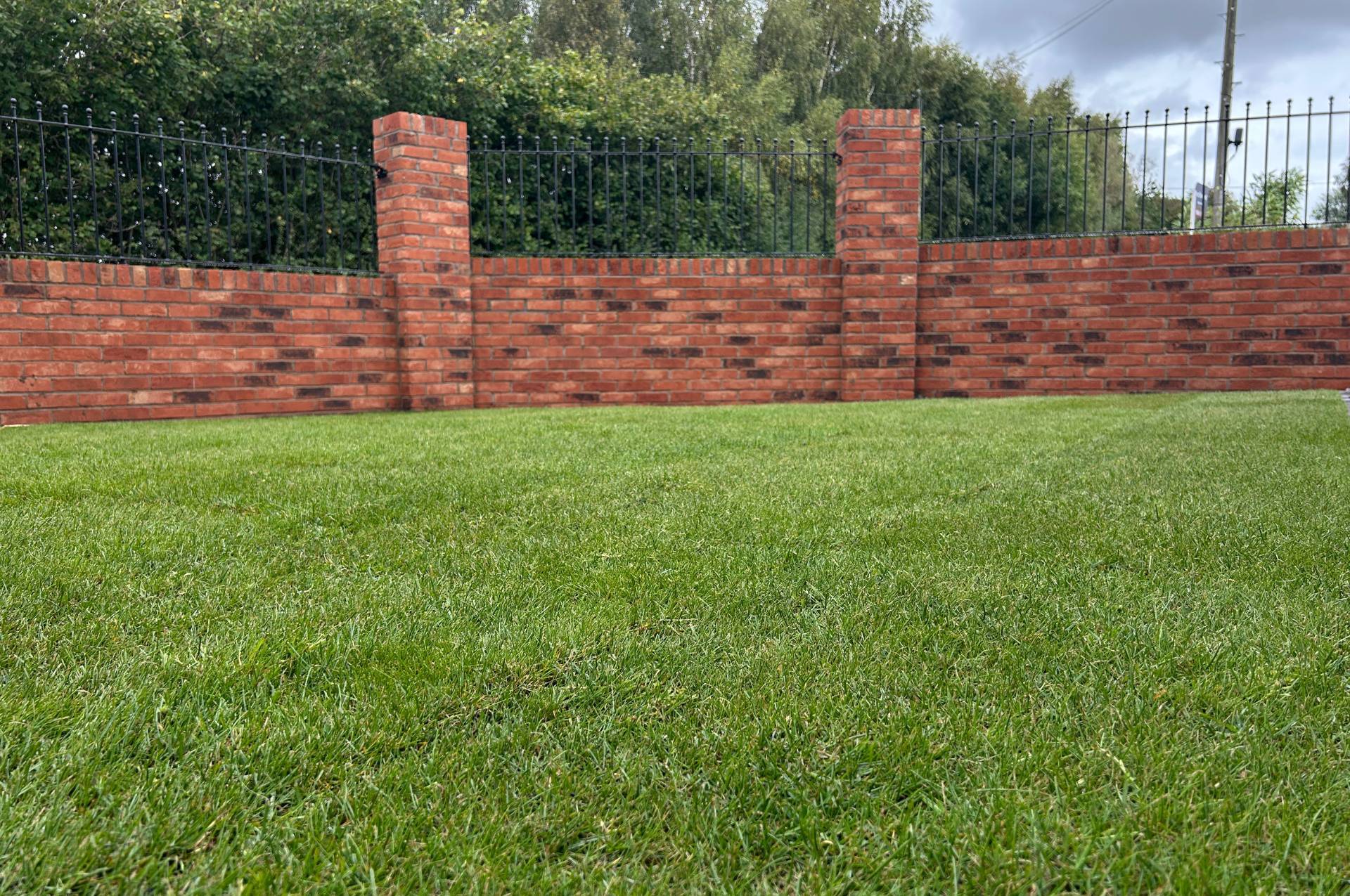
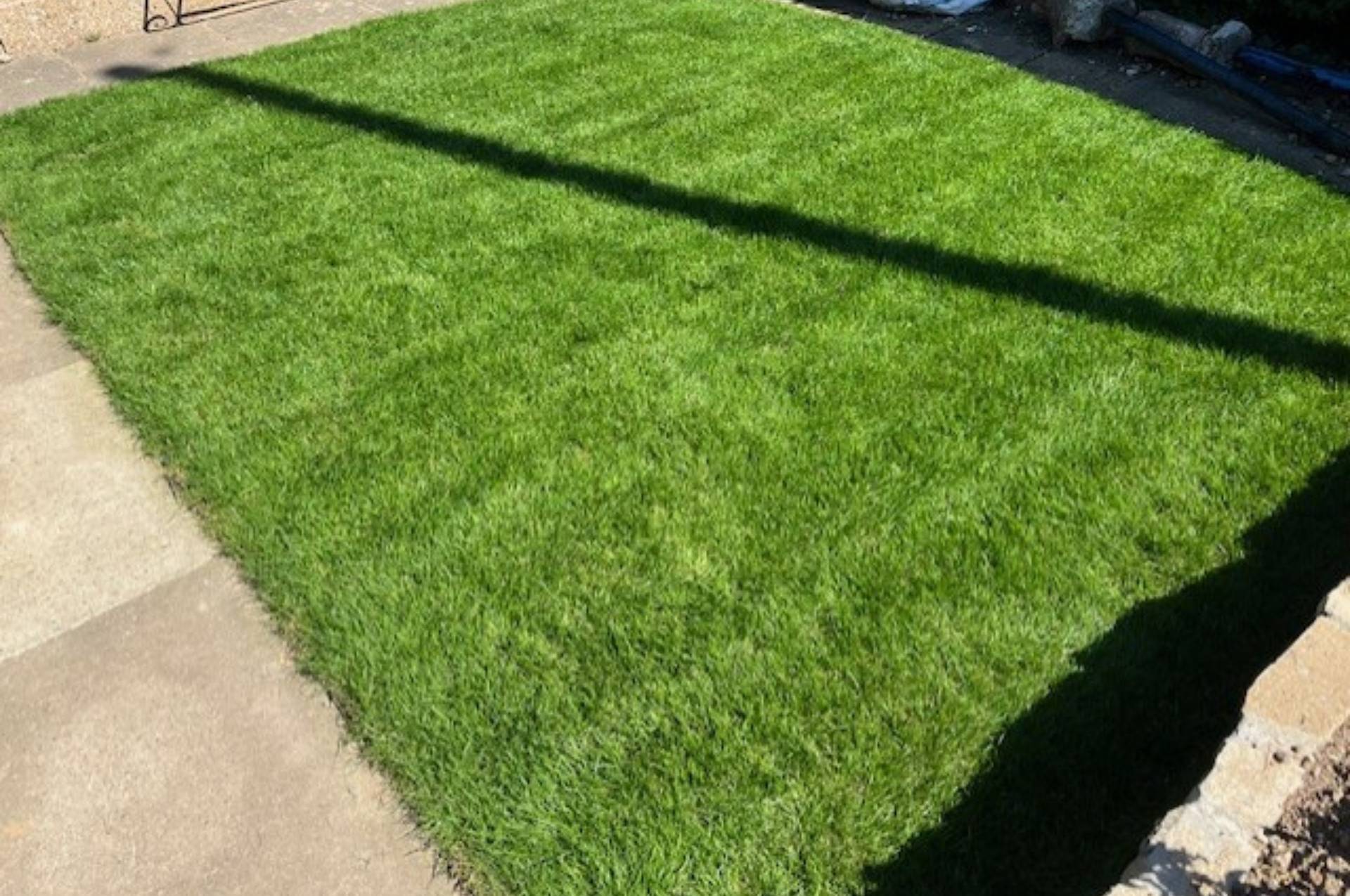
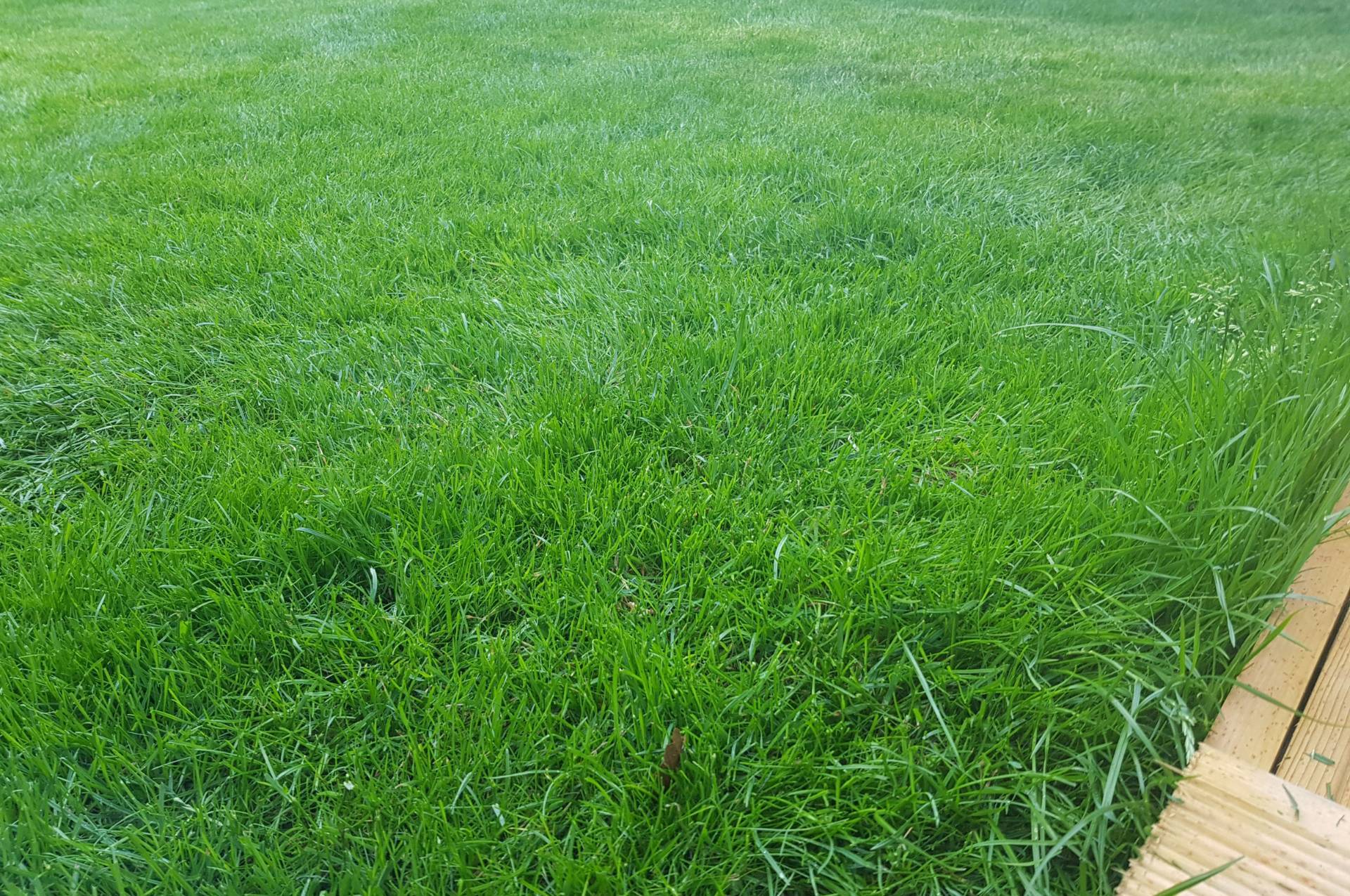
The turf quality is actually superb, the grass is a beautiful rich green colour
Soil Preparation and Drainage
Before laying your turf, preparing your ground correctly is the only way to ensure your turf thrives for years to come.
Even the most premium turf will struggle to thrive if it’s laid onto unsuitable ground and you don’t want to invest in a high-quality turf only for it to struggle to take to the ground properly and need replacing a year later.
A well-prepared, high-quality base of topsoil is essential to your turf’s survival.
Ensure the base isn’t too compacted, sandy, stony or has existing grass present.
This type of ground consistency cannot support turf root growth and the grass will simply die, or not root in well enough to handle heavy foot traffic or extreme weather conditions.
The ground should not have any large debris – small stones or any debris under 20ml will be fine and can actually help improve drainage and soil structure, but you should remove any large debris so that the root growth isn’t obstructed.
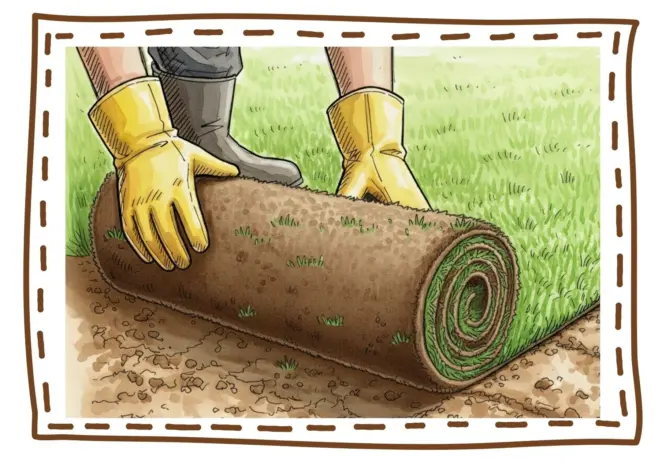
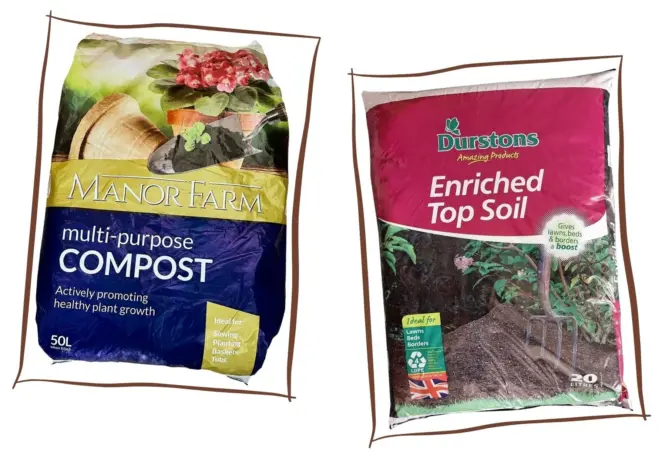
If the area has clay soil, you may encounter soil compaction and limited drainage which can stunt turf growth.
We’d recommend mixing in some of our high-quality topsoil to create a new, fluffier blend that can support healthy turf growth.
The area you’re turfing needs to have sufficient drainage to minimise the chance of waterlogging. If water cannot drain into the soil correctly, the area will become boggy and the turf will struggle to thrive.
We have both topsoil and compost available to purchase alongside our turf, giving you the ideal foundation for our product to grow into.
Maintenance Requirements
If you’re looking for a turf that’s going to help serve your local community, it’s usually a given that it needs to be self-sustaining.
Constant, skilled maintenance similar to what you’d be able to give a domestic garden may not be feasible due to budget and manpower limitations, so you need a turf that’s going to largely look after itself.
Choosing a naturally resilient turf will help the longevity of the space, but it’s important to remember to factor in basic maintenance into your budget and planning.
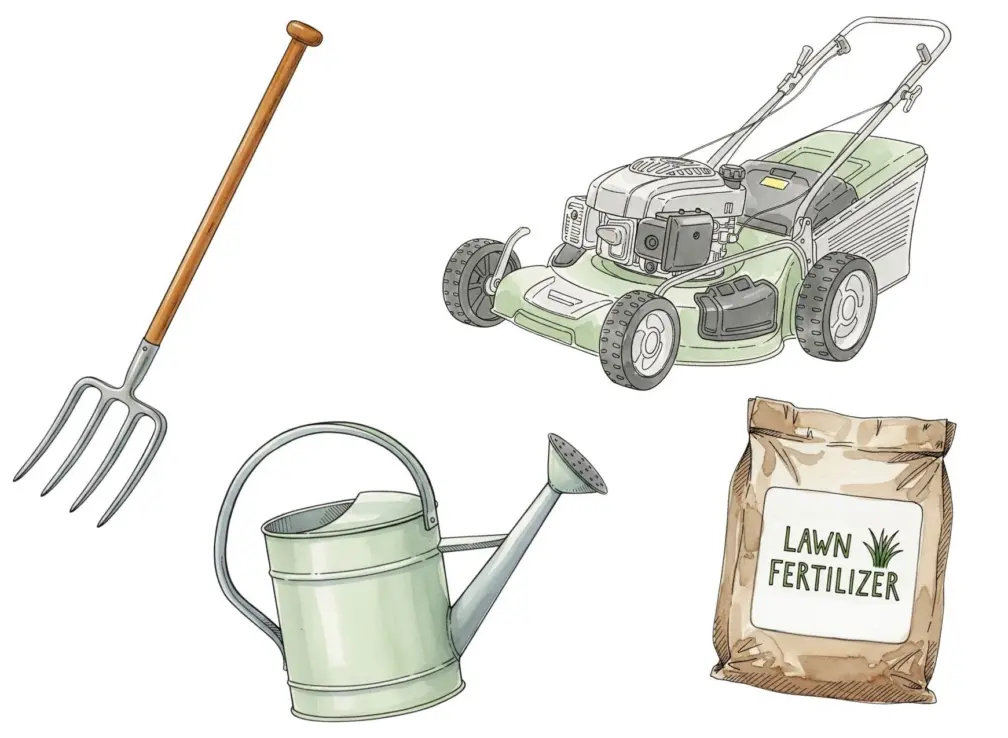
No natural grass is zero-maintenance, so the basic level of care required for your turf to survive includes:
Watering: Deep, infrequent watering to help the roots grow downwards into the soil towards the water. Established turf can survive prolonged dry spells our droughts, and will return to a lush green colour when the rain returns. You can also water less in Spring / Autumn when the rainfall is more consistent.
Mowing: Regular cutting (ideally weekly during summer) to encourage dense regrowth and suppress weed growth.
Fertilising: Feed the lawn seasonally to boost growth. Feed in Autumn / Spring with a slow-release fertiliser to give the grass a slow and steady boost of nutrients.
Our turf, which is grown in the British climate, is acclimatised to thrive in the UK year-round. So, by choosing a sturdy, self-repairing blend like ours, you minimise the labour and budget required, whilst still having a lush-looking, professional lawn.
Planning for Long-Term Success
Once you’ve installed the turf in your community space, it’s important to remember that aftercare is a crucial part of your turfing project.
Caring for your turf correctly once it’s been laid allows it to not only survive, but thrive for years to come.
Try to think beyond the initial purchase when planning and factor in budget for sustained maintenance, including watering, fertilising and potential future repairs.
Watering the Lawn
A consistent and thorough watering schedule immediately after laying is crucial in helping your turf successfully root into the ground. If the turf roots in deeply and thoroughly in these initial few weeks, the healthier and more stable it will be long-term.
Watering the turf also heavily depends on your local weather and climate. If you’re laying the turf in a naturally rainy season, you can water less frequently. Whereas, if installed during summer, you should make sure you’re watering heavily in the morning and evening before the sun is directly overhead.
This allows the ground enough time to absorb the moisture from the roots before the sun evaporates it from the ground. If you’re only watering once or twice in the hottest points of the day during summer, the water likely won’t have had time to reach the roots, so it’s as if you haven’t watered the grass at all!
Soil Health
The healthier your soil, the healthier your grass will be. To keep the ground in good condition, you may need to feed or aerate seasonally.
Applying fertiliser seasonally is best for the health of your lawn - applying too much can affect the soil pH balance, so you should only fertilise to give your soil a seasonal nutrient boost.
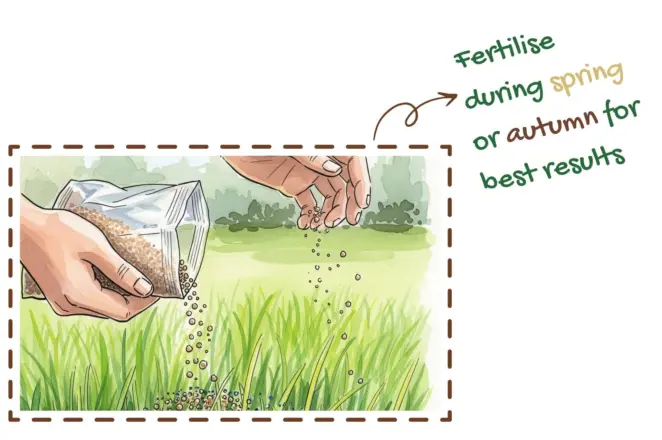
Fertilising in Spring helps give the lawn a growth boost.
Once the grass comes out of winter dormancy and is beginning to grow again, a feed that’s high in nitrogen can help encourage re-growth.
Alternatively, fertilising in Autumn before the colder temperatures of Winter helps give the lawn a strength boost, allowing it to withstand the harsher weather conditions.
If your soil has become compacted due to heavy use from the public, you may want to aerate to help improve the soil structure.
When the soil is compacted, it can’t absorb water efficiently. You’ll notice this when rain starts to pool on the surface of the grass rather than soaking in.
While this often happens after heavy summer use, turf in community spaces that gets year-round foot traffic may experience this more regularly.
Aerating can help improve the drainage. Poking small holes in the grass allows water, air and nutrients to reach the roots more easily.
If you’re turfing a small area or budget is limited, then this can be as simple as poking deep holes in the soil with a garden fork, but for larger spaces like sports pitches, or village greens, you may need to consider purchasing or borrowing a spike or hollow tine aerator.
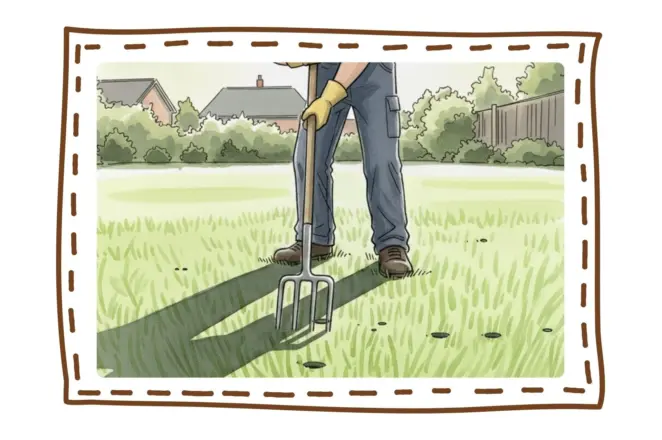
Mowing the Lawn
Mowing the lawn regularly (especially during Spring / Summer) is essential to keeping it healthy and allowing for new, dense growth.
Turf that’s left to grow wild can look unkempt, which isn’t ideal for a public-facing community space, but can also have detrimental effects to the health of your grass. Tall, dense grass that’s left to grow without any mowing encourages humid conditions for turf diseases and pests to thrive in and can encourage thatch growth.
For the first mow, mow on a high blade setting so that you don’t risk scalping the lawn.
Mowing a new lawn too short can cause patchy re—growth, so a good rule of thumb is to never take more than 1/3 of the length off at any one time.
It’s crucial that you’re able to mow the lawn. Even infrequent mowing is better than not at all, so it’s important to make sure long term maintenance is considered when planning your community project.
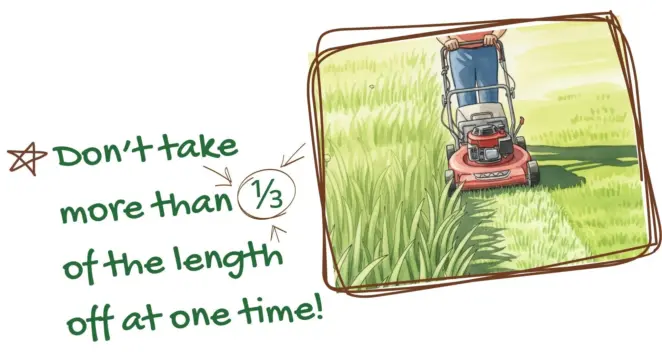
Turf Repairs
Just like any area of natural grass, your community turf will inevitably show signs of wear over time. Intense sustained foot traffic, or even damage from public events can cause areas to become patchy or worn. However, natural grass is self-repairing, so most of the time, small areas can easily recover on their own.
However, sometimes the grass needs a helping hand – for larger or more noticeable damaged areas, you can invest in some lawn seed and overseed areas to encourage re-growth.
Overseeding is best done in Spring or Autumn, as the warm temperatures and moderate rainfall provide perfect conditions for new grass growth. For more information on overseeding your lawn, check out our ‘Sowing Grass Seed’ guide.
Transforming a local community space with natural turf is more than just considering appearance – it’s a long-term investment. Thorough planning that considers the needs of the space, turf suitability and maintenance means you’ll have the best quality lawn that will serve your community indefinitely.
Ready to bring your community project to life?
For a fantastic balance of durability and aesthetic appeal, consider our Rye Gold turf. If your space is intended for heavy, intense use – our durable Stadium is the way to go.
Our team of experts are on hand to provide tailored advice for your specific community project, or you can buy online straight away! Order by 2pm the day before for next-day delivery.


